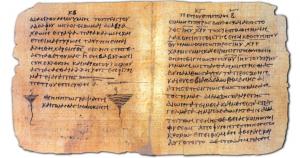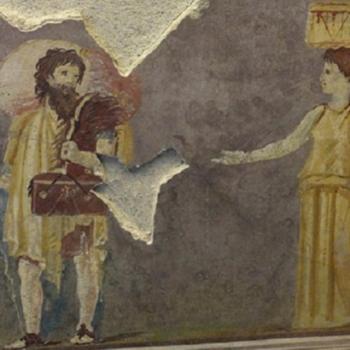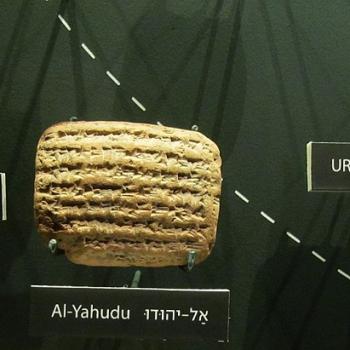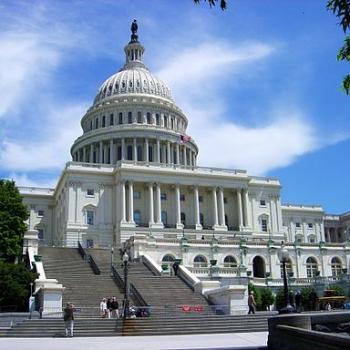Second Peter is the best example of an accused fraud, more than any other book of the Bible. If Second Peter does not come from the apostle Peter, we might as well throw it in the garbage, because the writer claims to have been an eyewitness to Jesus’ Transfiguration (2 Peter 1:16-18).

Second Peter has had a tough time in the critics’ den. After centuries of neglect, the book barely made it into our New Testament canon. The Egyptian versions and the Old Latin have Second Peter, but the Old Syriac and the Peshitta do not. Even Calvin was skeptical of the book. But the Councils of Hippo, Laodicea, and Carthage, plus Athanasius, all accepted Second Peter, while they excluded the letters of Barnabas and Clement of Rome, which had been read for almost two centuries in churches alongside Scripture. They evidently felt that Second Peter passed their stringent tests of authenticity.
The best critical defense of the book is Michael Green’s out-of-print booklet 2 Peter Reconsidered. (https://biblicalstudies.org.uk/pdf/2peter_green.pdf) Green concedes, “The Second Epistle of Peter was accepted into the Canon in the fourth century with greater hesitation than any other book.” But while no other book in the Canon is so rarely cited by the early church, he says, “Second Peter has incomparably better support for its inclusion than the best attested of the rejected books.”
Origen (early 200’s AD) is the first to cite this letter by name. He does so six times, including the lines, “Peter has left one acknowledged Epistle, and perhaps a second; for this is contested,” and, “Even Peter blows on the twin trumpets of his own Epistles.” Green also points out that Origen never questions the style or vocabulary of Second Peter, although he was one of the most skillful literary critics in the ancient world, as his comments on the authorship of Hebrews demonstrate.
Green cites allusions to the epistle by Clement of Rome (95 AD) and Barnabas (130 AD) as evidence that it was widely circulated at an early date. Clement uses the unusual term “majestic glory” (megaloprepēs), and echoes Peter’s claim that Noah was a “preacher of righteousness.” He also observes that while neither of Peter’s epistles appear on the earliest New Testament canon list in 180 AD (http://www.earlychristianwritings.com/text/muratorian.html), the Apocalypse of Peter does get mentioned, a book that seems to echo Second Peter.
Irenaeus (180 AD) quotes the same unique adaptation of Psalm 90:4 used by 2 Peter 3:8. In the second century, Second Clement, Justin Martyr, and Barnabas all use Psalm 90:4 as proof of chiliasm, but Second Peter does no such thing. He connects Psalm 90:4 not with the length of the Millennium, but with the closeness of the return of Christ, which sounds more like a first century theme rather than a second century theme.
Jerome explains the doubts on the style of Second Peter by suggesting two different secretaries. It is known early that Peter used Mark, Silvanus (= Silas, who also wrote for Paul), and a guy named Glaucias (according to Clement of Alexandria) to write for him. Is it possible that this Glaucias might be the one responsible for the style in Peter’s second letter that is so different from Silvanus’, to whom Peter dictated his first letter (1 Peter 5:12)?
Green theorizes that widespread ignorance of Second Peter in the early church may be because the letter may have existed for a time in only one copy. Indeed, the fact that letters such as Second Peter and James are so rarely quoted as Scripture in the early church may simply be due to a pro-Pauline or anti-Jewish-Christianity bias.
Why does it matter whether Peter wrote Second Peter? Can a bogus letter be a genuine word from God? Some would say yes. The standard claim by those who think so is that the issue did not matter to the early church, that there was no intent to deceive, and that the audience was not deceived. The leading case against that view is Terry Wilder’s book Pseudonymity, the New Testament, and Deception, a book that presents his dissertation done at the University of Aberdeen, Scotland.
Wilder cites abundant evidence that the early church did not knowingly accept books produced under a false name. The Muratonian Canon (180 AD – http://www.earlychristianwritings.com/text/muratorian.html) rejects letters to the Alexandrians and the Laodiceans because they were forgeries (it says “gall ought not to be mixed with honey”). The writer of the Acts of Paul and Third Corinthians was condemned by a bishop because his works were fiction. One prime reason the canonicity of Hebrews, Second Peter, and James was disputed was because so many people believed them to be bogus.
Wilder also points out that it was not necessary to write under a false name to speak with authority in the early church. The Gospels themselves are technically anonymous, as is much of the Hebrew Bible, and the Letter to the Hebrews (which never claims to be written by Paul). Mark and Luke were not even apostles, but the church accepted their writing (along with Hebrews, eventually) because it recognized the apostolic content of their teaching. It was never necessary to falsely claim apostolic authorship.
It may be argued that Biblical forgers were writing “what the apostle would have written if only he had been here.” But such a possibility has no evidence to substantiate it. The writer of 1 Timothy boldly insists, “I am telling the truth! I am not lying!” (1 Timothy 2:7) If this writer possessed a genuine unrecorded message from Paul, there were better ways to get it published that would have strengthened its credibility.
So the notion that fake authorship was an accepted literary convention in the early church all but evaporates, which leaves intentional deception as the only logical motive for such a text. Wilder uses the image of a thief who steals a Picasso painting, reproduces it in the finest detail, and sells the imitation as it were an original. He says, “The copied work is a fraud, not primarily because of what has been painted on its canvas, but because of who has painted it.”
Pseudonymity was an issue unique to Christianity. It did not matter who wrote a Greco-Roman religious text. For Christians, however, the issue of whether a text is apostolic in its origins is foundational. We need to know whether a book is an authorized word from Jesus or his apostles. The early church needed desperately to know, because they were barraged with false apostolic claims that led to a false theology. We who are even further removed in time from the source than they were, for us, it matters all the more.
If the writer of Second Peter is not the witness to Jesus’ Transfiguration that he claims to be, throw his book in the garbage. I believe he is who he claims to be.












